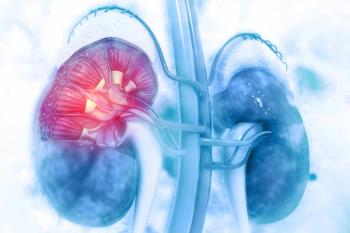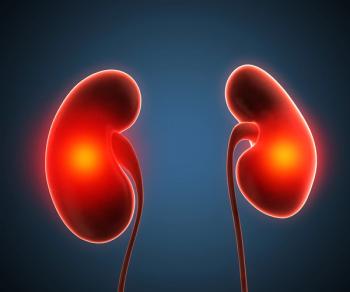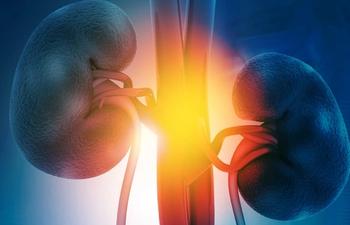
Oncology NEWS International
- Oncology NEWS International Vol 6 No 9
- Volume 6
- Issue 9
IL-2 Termed ‘Gold Standard’ in Renal Cell Carcinoma
SAN FRANCISCO-Interleukin-2 is proving to be one of the most effective treatments yet discovered for renal cell carcinoma. Speaking at the Proleukin First International Congress, sponsored by Chiron Corporation, Richard I. Fisher, MD, director of Loyola University’s Cardinal Bernadin Cancer Center, Maywood, Ill, dubbed IL-2 “the new gold standard against which other treatments need to be compared.”
SAN FRANCISCOInterleukin-2 is proving to be one of the most effective treatments yet discovered for renal cell carcinoma. Speaking at the Proleukin First International Congress, sponsored by Chiron Corporation, Richard I. Fisher, MD, director of Loyola Universitys Cardinal Bernadin Cancer Center, Maywood, Ill, dubbed IL-2 the new gold standard against which other treatments need to be compared.
Response to IL-2 is getting better with time and experience, he said. The most recent results, 255 patients in seven phase II trials of high dose IL-2, produced responses in 15% of patients (7% complete remissions and 8% partial responses).
More important, Dr. Fisher noted, median survival with IL-2 therapy is approximately 25% longer than historical results achieved with chemotherapy alone. Up to 20% of renal cell carcinoma patients treated with IL-2 will still be alive between 5 and 10 years after treatment.
The studies used relatively high doses of recombinant IL-2 (Proleukin), 600,000 or 720,000 IU/kg by 15-minute intravenous infusion every eight hours for up to 14 doses over five days, depending on toxicity. A second cycle followed after five to nine days of rest, with courses repeated every six to 12 weeks in stable or responding patients.
Median survival for all 255 patients was 16 months, with some complete responders still in remission after 10 years. Median duration of response for partial responders is 20 months, with a range of three months to more than 97 months.
Most of the partial responders have relapsed, but 75% of the complete responders remain in remission. That plateau in the response curve suggests some difference in biology between complete responders and partial responders, Dr. Fisher said. Although this difference has not yet been defined, he said, it is clear that high-dose IL-2 is extremely effective for a distinct subset of renal cell carcinoma patients.
IL-2 Combinations
Janice P. Dutcher, MD, professor of medicine, Albert Einstein Cancer Center, Montefiore Medical Center, Bronx, NY, reported similar results comparing different dosages of IL-2 alone and in combination with interferon-alfa-2b (Intron A) and fluorouracil. The overall response rates varied from 11% to 17%.
There are a number of ways to give IL-2, she told the Congress. What needs to be worked out is duration of response and the impact on survival.
Dr. Dutcher, who is director of the Bone Marrow Transplant and Cytokine Research Program and the Pheresis Research-Blood Bank, reported complete responses in 7% of renal cell carcinoma patients receiving high-dose IL-2 alone, but none in the high-dose IL-2 plus IFN-alfa-2b group.
Two lower-dose outpatient regimensIL-2 plus IFN-alfa-2b; and fluorouracil/IFN-alfa-2b alternated with IL-2/IFN-alfa-2bproduced 4% complete responses.
With such relatively low rates of complete responses, she said, duration of response becomes extremely important. The median response duration was 53 months for high-dose IL-2 and 12 months for the lower-dose outpatient regimens.
The median survival of all patients was 15 to 20 months, but progression-free survival in the high-dose IL-2 cohort at three years was 13%, against 2% for the IL-2 plus IFN-alfa-2b groups. The Cytokine Working Group has initiated a randomized study comparing high-dose IL-2 with lower-dose outpatient IL-2 plus IFN-alfa-2b, she said.
James Yang, MD, senior investigator for the NCIs Surgery Branch, reminded the Congress that although high- and low-dose IL-2 produce similar short-term response rates in renal cell carcinoma, questions remain about longer term response and survival on low-dose regimens.
In 1991, he began a randomized trial of high-dose IL-2 bolus versus low-dose bolus. When it became clear that most IL-2 was actually being administered subcutaneously on an outpatient basis, he added a low-dose subcutaneous (SC) arm.
The results, Dr. Yang said, are inconclusive. The initial response rates were 19% for high-dose bolus and 10% for low-dose bolus. The low-dose patients suffered significantly fewer and less severe toxicities, but there is as yet no apparent difference in long-term survival. The initial response rate of patients receiving SC IL-2 was 11%. Follow-up is insufficient to compare overall survival.
Among complete responders, high-dose bolus patients were treated from 20 to 29 weeks, low-dose bolus patients from 12 to 27 weeks, and low-dose SC patients from 43 to 77 weeks. The study is expected to reach full accrual in 1998, and longer term follow-up will be needed.
Nephrectomy and treatment with tumor-infiltrating lymphocytes (TILs) in addition to IL-2 appear to extend survival even longer. Robert Figlin, MD, of UCLA School of Medicine, reported that response rates and survival were significantly higher in patients nephrectomized more than 6 months before IL-2 therapy.
Nephrectomy Recommended
Differences in outcomes were sufficiently different that he recommends nephrectomy for all renal cell carcinoma patients before IL-2 treatment. He surmised that the kidney somehow interferes with the activity of IL-2, but the potential mechanism is unknown.
Patients nephrectomized at least six months before IL-2 therapy had three-year survival of 43%. Patients nephrec-tomized less than six months before IL-2 or who kept the kidney had three-year survival of 9% and 4%, respectively. Three-year survival of patients given TILs in addition to IL-2 after nephrectomy was 38%. The most important predictors for survival were response to IL-2 and time from nephrectomy to treatment.
Articles in this issue
over 28 years ago
IL-2 Shows Promise in Treating Hematologic Cancersover 28 years ago
Studies Show Who Seeks Mammography and Whyover 28 years ago
New Policy Board Enters Tobacco Frayover 28 years ago
Index Quantifies Bone Disease in Prostate Cancerover 28 years ago
Wynder Urges Nutrition as an Adjunctive Cancer Therapyover 28 years ago
Treating Other STDs May Reduce HIV Levels in the Semenover 28 years ago
Bisphosphonates Improve QOL in Bone Lesion Patientsover 28 years ago
Children Run Greatest Cancer Risk from Nuclear Testsover 28 years ago
Trials of IV SNX-111 Paused, but Phase III Pain Trials Continueover 28 years ago
ACS Recommends Major Changes in Tobacco SettlementNewsletter
Stay up to date on recent advances in the multidisciplinary approach to cancer.


















































































